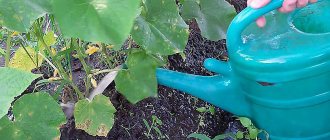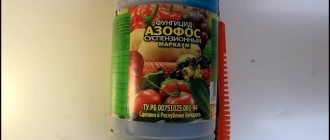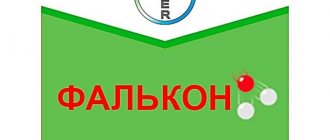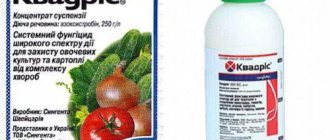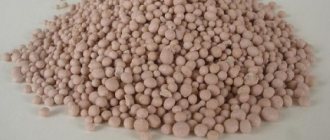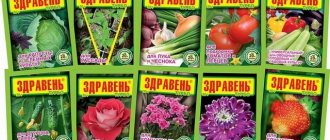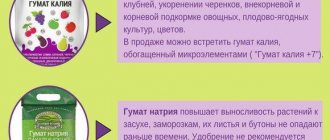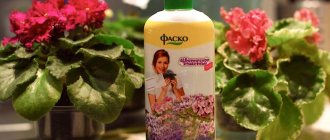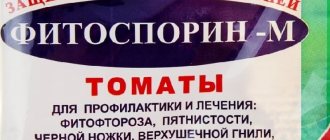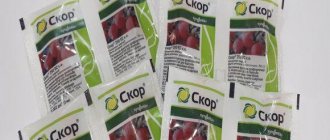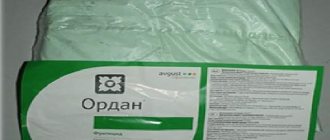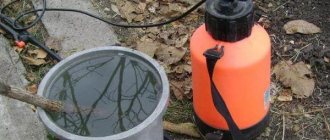"Borofoska" - methods of application, composition and properties
For normal development, plants need organic and mineral fertilizers, and in the correct dosage.
More and more gardeners prefer the universal fertilizer "Borofoska". In addition to the main nutrients, it contains boron - a microelement, without which full growth, flowering and fruiting of garden crops is not possible. This drug is based on two main macroelements (potassium, phosphorus) and three microelements (boron, magnesium, calcium). Without them, the most important biochemical processes of garden crops and soil are suspended.
The fertilizer has the form of brown granules. You can limit yourself to using only this concentrated drug to get a good harvest. Borofoska stimulates the growth of garden crops and contains the necessary amount of minerals for the development of the root system of plants.
Fertilizing is actively used for:
- accelerating the growth of shrubs, seedlings of fruit and vegetable plants;
- rapid rooting and successful development of flower crops.
The dosage for applying Borofoski is 80-95 mg per meter, for young trees - 60 g per meter. If you exceed the prescribed fertilizer rate, nothing bad will happen - the plants will absorb exactly as much as they need.
Note. Borofoska is added before digging so that the minerals are embedded in the soil and successfully dissolved.
What is it, what is its composition
Borofoska is a universal balanced mineral fertilizer, a granular chlorine-free complex of macro- and microelements.
The ratio of active nutrient substances in the composition of borophosphate :
- 20% calcium is a life-saving mineral for fruits, resists infection by putrefactive bacteria; strengthens tissue cells (forms the “skeleton” of the plant); participates in the metabolism and synthesis of carbohydrates and proteins, normalizes ionic balance; helps absorb nitrogen;
- from 16% potassium – ensures carbohydrate and protein metabolism, full development of the vegetative part (nourishes seedlings, young seedlings), the element is necessary for vegetables and fruits, concentrates sugars, vitamins; increases the shelf life of finished products;
- from 10% phosphorus - the element restores, strengthens the root system and prepares the plant for flowering; influences the formation of ovaries and fruits;
- up to 2% magnesium – an element participating in chlorophyll, optimizes photosynthesis; stimulates the growth of the above-ground part, promotes tillering;
- up to 0.25% boron – a stimulator of nucleic acid metabolism, ensures flowering, protects plants from the proliferation of harmful microflora, resists dry rot, black leg, rotting of roots and cores in the fruits of garden trees, root crops and vegetables.
Reference. Of all the NPK complexes (single ending “phoska”) - ammophoska, nitroammophoska, azophoska, etc., borophosphoska has the main difference - it does not contain nitrogen .
Physical and technical characteristics of the fertilizer:
- Available in the form of brown granules;
- granules have low hygroscopicity and do not cake when stored correctly;
- the fertilizer complies with the state standard - registration number 381-10-1536-1;
- the drug is protected from spontaneous combustion (the ingredients are not flammable);
- belongs to hazard class 3 (does not pollute the environment, not a dangerous substance for domestic animals and humans);
- store the drug in an inaccessible, cool (up to 40C) dark place;
- It is recommended to store in the original packaging in an airtight container (in separate paper bags, cellophane or fabric bags);
- the shelf life under optimal conditions and normal humidity (up to 70%) is not limited;
- interaction with the chemical does not pose a direct danger;
- after working with the drug, you need to take a shower, wash your hands and face thoroughly;
- To prevent poisoning and allergic reactions, work is carried out in special clothing, gloves, a mask or a respirator.
Composition and properties
Phosphorus (about 10%). Plants draw energy from this macronutrient, which stimulates their germination.
Potassium (within 16%). Strengthens the immunity of garden crops, making it easier to tolerate frosts and dry periods.
Calcium (about 20%). Regulates protein-carbohydrate metabolism, stimulates the development of powerful rhizomes.
Magnesium (within 2%). Stabilizes carbohydrate metabolism, as well as tissue metabolism.
Boron (about 0.25%). An invaluable catalyst for the growth and development of fruit and vegetable crops.
Properties:
- The combined use of the drug and peat leads to an increase in the content of organic elements in the soil.
- Slightly acidifies the soil. But when combined with peat, such an effect is not observed.
- Eliminates a number of plant diseases caused by a lack of essential nutritional components.
- Phosphorus is not washed out of the fertilizer due to its weak migration ability.
Storage conditions and safety rules
The drug "Borofoska" is a non-toxic product, therefore it does not have a negative effect on humans, bees and animals. However, upon contact with skin it may cause irritation and itching. In view of this, work with fertilizer should be carried out with gloves. Upon completion of treatment, wash your hands and face with soap. In case of contact with the mucous membrane of the eyes or mouth, rinse thoroughly with water.
The shelf life of the drug is 24 months if all conditions recommended by the manufacturer are met. The product must be protected from direct sunlight and moisture. Keep packages closed. Storing next to food, medicine and other household supplies is prohibited. The prepared solution can be stored for no more than a day.
The Borofoska mineral complex is an effective assistant for beginners and experienced gardeners. It contains all the necessary macro- and microelements that promote active growth and fruiting of crops. Thanks to a balanced proportion of substances, plants receive complete nutrition. The drug should be used according to the manufacturer's instructions.
X
Advantages
The use of Borofoski affects the development of all garden crops without exception.
- Contains an optimal ratio of useful elements in an easily accessible form.
- Helps strengthen plant immunity.
- Ensures the appearance of ovaries and abundant flowering.
- Positively affects the productivity of garden crops.
- Reduces the percentage of potassium content in the soil, thereby increasing the percentage of exchangeable cations.
- Promotes the formation of a well-developed root system.
- Reduces the risk of nitrates and heavy metals leaking into fruit and vegetable crops.
- Improves soil quality.
- Does not contain chlorine.
- It is impossible to “overfeed” the soil and garden crops with the drug.
- The fertilizer is approved by leading agronomists.
Borofoski has no disadvantages. This drug will not harm plants and will not burn the root system. However, there is no need to use it on fertile soils.
Benefits of fertilizer
The granular fertilizer mixture is enriched with a large number of valuable elements, each of which is responsible for a specific function. In general, according to reviews, they are irreplaceable saviors for poor soil.
Top dressing has a number of positive qualities, which include:
- Strengthens plant immunity
- Guarantees effective flowering
- Increases productivity
- Reduces the dose of potassium in the soil, thereby increasing the percentage of exchangeable cations
- Reduces the risk of radioactive cesium and nitrates entering vegetation by up to 12 times
- The uniqueness of the product lies in its multifunctional actions for most types of plants
- The structure includes all nutrients
- Excellent for stimulating root growth
- Natural mineral fertilizers can counteract anthropogenic influence
- The fertilizer contains no chlorine
- Increases the acid reaction of the soil at the time of application to the soil
- The bait is approved by agronomists
The main advantage of Borofoski is the low probability of overdose. If you use a large amount of fertilizer, the plant will “take” as much as it needs.
Instructions for use
Gardeners are usually guided by the needs of specific plants for potassium, phosphorus, and other elements.
On sandstones, the use of Borofoski does not in any way affect the density of the humus layer. When the drug is combined with peat, an increase in the content of organic substances by 25% is observed, while the acidity remains the same.
There are several ways to use Borofoski. When digging into the ground, about 9 kg of the drug per hundred square meters is embedded. In cases where fertilizing is required during planting or a little later, the dosage is reduced to 6 kg.
When plowing the soil shortly before sowing, based on current agrochemical indicators, it is customary to add: 65 g of the drug per meter; for legumes, cereals, flax, potatoes and other root vegetables, herbs - 105 g per meter.
When to apply Borofoska
Fertilizer is used in autumn, spring, and during plant growth as a top dressing.
Suitable for chernozems, sandstones, peat soils.
A characteristic feature is that fertilizing does not negatively affect the soil composition or the density of the fertile humus layer. Fertilizer, even when applied regularly, does not deoxidize the soil.
in spring
In early spring, the soil needs nitrogen. Gardeners use urea and calcium nitrate (to warm the soil).
When to use?
When is it best to use fertilizer and why?
In the fall, it is customary to apply fertilizers with a minimum nitrogen content so that the plants have time to prepare for the dormant period. Nitrogen, on the contrary, stimulates their further growth, which is extremely dangerous in the pre-winter period. Borofoska does not contain nitrogen, but it contains a lot of phosphorus and potassium. These substances are especially relevant for apple trees, pears and shrubs in the autumn. The application rate is 40 g per meter.
In autumn, dry and granular fertilizers are considered the most effective, which is why it is worth keeping Borofoska in mind. Experienced gardeners scatter it around the site before autumn digging. The soil fertilized with the preparation will appeal to potatoes and all other root vegetables. Application dosage – 60 g per meter. In the spring, all you have to do is add a little nitrogen, and an excellent harvest of vegetable crops is guaranteed.
After the snow melts, Borofoska, as a rule, is not used, since nitrogen-containing fertilizers, for example, urea, are relevant during this period. But at the beginning of summer, when there is an active period of budding, flowering and fruit set, the drug comes in handy. At this time, crops need additional nutrition with potassium and other minerals.
In addition, the use of Borofoski in summer allows garden crops to resist attacks from pests, as well as the most common diseases (especially rot). Fertilizers and flower crops love this very much. After its application, an intensive budding process and subsequent abundant flowering are observed.
For root feeding of tomatoes, peppers, cucumbers, make a solution based on the drug: 1 large spoon per bucket of water. This fertilizer is used up to 3 times throughout the season, pouring up to 1000 ml of fertilizer under each plant.
For berry fields, seedlings, young fruit trees, the dosage is higher - 2 large spoons per bucket. Solution consumption – 10 liters for each plant.
What plants is it suitable for?
Due to the fact that there is no nitrogen in the composition, fertilizer can be safely applied to all perennials.
Mature garden trees, bushes and young seedlings need additional nutrition for the growth and branching of the root system.
They respond well to fertilizing with borofoska:
- apple trees;
- pears;
- plums;
- raspberry, gooseberry, currant bushes;
- planting strawberries and garden strawberries.
Ornamental vegetation also reacts positively to the mineral complex.
Apply fertilizer at the time of forcing buds for ornamental flowering plants :
- tulips;
- crocuses;
- Pushkinia;
- hyacinths;
- daffodils;
- lilies of the valley
Important : for 10-12 days, bright colorful flowering remains, and the wilting process slows down.
Vegetables, cereals, and melons especially need additional nutrition; the composition of the fertilizer will have a beneficial effect on the plants:
- tomatoes;
- cucumbers;
- bell pepper;
- eggplant;
- potato;
- all legumes, cereals;
- watermelons, melons;;
- zucchini;
- pumpkins.
The fertilizer is ideal for root crops :
- beet;
- carrot;
- potato.
Important : thanks to boron, borofoska protects root crops from diseases (rot, cercospora blight, fungus).
Borofoska - reviews, description
Post by maschu » Thu Jan 09, 2014 9:45 pm
Borofoska is a phosphorus-potassium fertilizer, a granular fertilizer mixture for feeding garden crops throughout the growing season in order to increase yields and improve the quality of grown products. A fertilizer called Borofoska is quite popular among gardeners. In this case, borofoska comes to the rescue. The fact is that boron is vital for plant growth. Therefore, the use of borophosphate when planting a wide variety of crops is completely justified. Do plants need potassium, phosphorus and other microelements? Borofosk fertilizer contains them in the required quantity. It does not dissolve quickly, therefore, it is not washed out, being removed with sediment; absorbed progressively as needed.
Article on the topic: ROKON for pots - reviews, description
During the period of growth and development, boron is vital for plants: it improves fruit set, resists the fall of ovaries, thanks to it, the shelf life of fruits increases, and their taste improves. Calcium stimulates the harmonious growth and development of plants, makes it possible to safely tolerate transplantation, hypothermia, diseases, stimulates the development of the root system, etc. In addition, the calcium contained in borophosphate promotes additional deoxidation of the soil. Borofoska is successfully used when planting and for feeding fruit trees and berry bushes, as well as vegetable crops. It is best to fill the soil with this fertilizer before autumn digging (as the main application) and feed the plants several times during the season. Also in the fall, before winter, borophosphate is applied to the soil, along with other phosphorus and potassium fertilizers.
Features of borophosphate fertilizer. Borofoska can be used on all types of soil, even the poorest, in which phosphorus and potassium are practically absent. This fertilizer alone is enough for good plant growth. Both greens and roots grow quickly, since borophosphate contains a sufficient amount of minerals and calcium. It is necessary for the following purposes: full-fledged cultivation of seedlings; fertilization of flower crops; rapid growth of shrubs.
When introducing borophosphates into the soil, it is necessary to adhere to the norm: 70-100 mg/sq. m, for seedlings – 50-80 g/sq. m. If it was not possible to comply with the norm, and you used a little more fertilizer, do not worry: the plants will absorb exactly as much as they need. At the same time, note: if you violate the norm of other fertilizers, then such an overdose is fraught with the death of plants. With Borophoska, such an ending is excluded. True, it costs a little more than the usual phosphorus and potassium mixtures, but with its use you significantly save your time. The composition of this fertilizer is balanced so that the penetration of nitrate forms of nitrogen is excluded. This means that the quality of the future harvest will increase significantly.
Borofoska: composition, application Borofoska top dressing is very popular and is produced in various packages from different manufacturers. Valuable elements, content Purpose Phosphorus at least 10% Plant tissues receive energy from this element, which stimulates growth processes and development of plants as a whole. Potassium, 16% Helps plants withstand extreme weather conditions: drought and frost. Calcium, 20% Responsible for the regulation of carbohydrate and protein metabolism and the development of the root system of plants. Magnesium, 2% Normalizes carbohydrate metabolism, promotes activation of redox processes in plant tissues. Boron, 0.25% Indispensable for plant growth and development.
In addition to the purposes already mentioned, borophosphate is used: as a top dressing for any garden crops throughout the entire growing season; as the main filling of the soil on the eve of planting; during planting of tuberous and bulbous plants; when planting berry bushes and fruit trees; during planting seedlings in open ground.
Advantages of borophosphate fertilizer Multifunctional product, effective for all types of plants. It contains the optimal ratio of nutrients in a simple and accessible form. Increases possible yield. Strengthens plant immunity. Serves as a guarantee of abundant and long flowering. Improves the quality of any type of soil. It is a stimulator of root system growth. Borofosk does not contain chlorine. This fertilizer is recommended by agronomists.
Regardless of the type of soil, all natural mineral fertilizers affect its ability to counteract anthropogenic influence. Phosphorites are considered very promising natural formations that contain mineral components that give impetus to natural soil fertility. However, today the production of highly concentrated phosphorus raw materials is limited. This explains its rather high cost, which reduces the demand for it. Therefore, non-standard mineral fertilizer was used - for example, phosphate rock and fertilizer mixtures produced on its basis. Today they are especially popular among gardeners and gardeners. Without calcium, magnesium and boron, the normal course of biochemical processes in plants and soil is impossible, and borophosphate is precisely a complex potassium-phosphorus preparation containing the optimal amount of these elements.
Re: Borofoska - phosphorus-potassium fertilizer
Post by valda » Fri May 23, 2014 11:31 pm
Borofoska is used for many different fruit plants. Borofoska can be adapted to the requirements of almost any crop, even forest plantations. It is only necessary to correctly calculate the concentration of this fertilizer, which would correspond to a particular type of soil. When calculating application rates, you should take into account how much potassium and phosphorus are needed by the crop, as well as how much of these elements are contained in the soil at the time the fertilizer is introduced. Borofoska is also valuable because the phosphorus that is included in its composition is practically not washed out due to the weak migration of this element through the soil composition and due to chemical absorption reactions, as well as due to capital consolidation at the injection site.
Practical experiments on the introduction of borophosphate into sod-podzolic sandy soils and into artificially reproduced soil have shown that it does not have any effect on the density of humus in the natural environment. But the concentration of humus in artificial soil decreased by 18%. This happened due to accelerated mineralization processes. But when borophosphate and peat were added to the soil together, the organic content in both soils increased by more than 20%. At the same time, in both cases, when pure borophosphate is added, the acidity of the soil increases by 0.2-0.5 pH. When this fertilizer is applied together with peat, the acidity does not change.
If you add borophosphate alone or in combination with peat into sandy soil, the content of mobile phosphorus in it increases: peat stimulates the transition of mobile phosphorus contained in borophosphate into forms that dissolve faster. Metabolic potassium in any of the above options is reduced. When borophosphate is added to the soil together with peat, the exchangeable cations in it increase slightly.
How to use borophosphate: instructions for use There are several options for using the drug. When plowing the soil, 7-10 kilograms of fertilizer per hundred square meters are injected into it in parallel. If you need to feed the plants during or after planting, the application rate is reduced to 5-8 kilograms. We must not forget to take care of personal safety during this work. When using borophosphate in practice, you should use gloves, safety glasses and protect your respiratory tract. The main effects of using borofoska fertilizer are:
If you use it in parallel with peat, you can increase the content of organic matter in any type of soil. Borofosk makes it possible to adjust the phosphate regime in soddy-podzolic soils, but does not provide a similar effect on artificially created soil. When added to the soil, borophosphate slightly increases its acid reaction. When calcium levels in the soil decrease, the proportion of exchangeable cations in it increases. Adding boron to the soil completely eliminates diseases that arise from its deficiency. This occurs when growing points and young parts of plants die; the number of flowers decreases, the ovaries disappear; when heart rot occurs in beets; for brown or red rot in cauliflower, etc.
For plowing or cultivating the soil before sowing, depending on agrochemical indicators, apply: 60-70 grams of borophosphate fertilizer per 1 square meter. m; for legumes or grain crops, annual and perennial grasses, flax, corn, sugar beets, vegetables and potatoes - 100-110 grams per 1 sq. m.
Article on the topic: Fertilizer Green Boom Rhododendron - reviews, description
Re: Borofoska - phosphorus-potassium fertilizer
Post by Marisa » Tue Feb 24, 2015 9:44 am
Borofoska is a phosphorus-potassium fertilizer. It is very important that the composition of borophosphate is balanced in such a way as to exclude the penetration of nitrate forms of nitrogen. Therefore, the quality of your potential harvest increases many times over. The advantage of borofoska is its price. In terms of price/quality ratio, borophosphate has practically no competitors, as well as analogues. So, you have purchased borophosphate - using it will help you achieve the effect described below. Borofoska: instructions and main effects of the drug. What will attract your attention immediately after purchasing borophosphate fertilizer? Instructions and main effects that the drug has on the environment. Any natural mineral compound, to one degree or another, affects the ability of the soil to withstand anthropogenic impact. Moreover, regardless of the type of soil. Phosphorites are among the most promising natural formations containing mineral elements that stimulate natural soil fertility. However, the production of high-concentration phosphorus raw materials is, unfortunately, limited, which has also increased its cost. Accordingly, the demand for it is not so great. Therefore, unconventional mineral raw materials, so to speak, were used - in particular, phosphate rock and fertilizer mixtures based on it. They are gaining particular popularity today. Borofoska is a complex potassium-phosphorus preparation that also contains a certain amount of calcium, boron and magnesium. Without all these elements, the normal course of biochemical processes in soil and plants is impossible. Borofoska can be adapted to the requirements of any crop, including even forest plantations. It is enough just to correctly calculate the concentration in accordance with a particular type of soil. When calculating application rates, take into account how much a particular crop needs potassium and phosphorus, as well as the content of these elements in the soil at the time of the proposed application of borophosphate.
The value of borophosphate also lies in the fact that the phosphorus in its composition is practically not subject to leaching. This is explained by the weak migration of the element through the soil composition due to chemical absorption reactions and reliable fixation at the site of application. Practical experiments were carried out on the application of Borofsky to sod-podzolic sandy soils, as well as artificially created soil. It turned out that this fertilizer does not affect the concentration of humus in the natural environment, but in artificial soil the humus content decreased by 18% due to the acceleration of mineralization processes. However, when borophosphate was added together with peat, the proportion of organic matter in both soils increased by more than 20%.
In addition, in both options for applying pure borophosphate, the acidity of the soil slightly increases - on average by 0.2-0.5 pH. When combined with peat, the acidity indicators did not change. The use of copper sulfate in the garden: how, why, in what way Molybdenum fertilizers If we talk about sandy soil, when adding either just borophosphate or a combination of peat with borophosphate, the proportion of mobile phosphorus in the soil increases. The fact is that peat activates the transition of mobile phosphorus contained in borophosphate into more soluble forms. But metabolic potassium decreases in any of the above options. When adding peat and borophosphate, the exchangeable cations in the soil increase slightly. Borofoska: main points of instructions for use How to use borofoska fertilizer? Instructions for use of the drug offer the following options. When plowing the soil, it is embedded parallel into the soil in an amount from 7 kg to 10 kg for each hundred square meters of land. If you want to feed the trees during or after planting, the application rate is reduced to 5-8 kg. One of the main points that you should pay attention to is, of course, personal safety when working with the drug. Be sure to wear gloves, safety glasses, and respiratory protection.
Borofoska: composition Why is borofoska so valuable? Its composition states that the preparation contains at least 10% phosphorus, 16% potassium, 0.25% boron, 20% calcium and 2% magnesium. What is the role of each element: potassium helps plants withstand any weather conditions from drought to frost; phosphorus provides plant tissue with the necessary energy, which is responsible for the speed of growth processes and development of plants as a whole; calcium regulates the metabolism of carbohydrates and protein, and is also responsible for the full development of the root system of plants; magnesium also helps normalize carbohydrate metabolism and activates redox processes in plant tissues.
Borofosk fertilizer: main effects So, the main effects of Borofosk fertilizer can be summarized as follows. When used in parallel with peat, it helps increase the organic matter content in any type of soil. Regulates the phosphate regime in sod-podzolic soil, but does not have a similar effect on artificially created soil. Borofosk fertilizer slightly increases the acid reaction of the soil when applied. Reduces the amount of potassium in the soil, while simultaneously increasing the proportion of exchangeable cations in the soil.
Compound
A balanced ratio of valuable elements is the key to a good and environmentally friendly harvest.
Complex replenishment of Borofosk consists of active natural macroelements. They are directly involved in improving the quality of the crop. The main elements of Borofoski are considered to be:
- 20% of calcium is responsible for the regular metabolism of protein and carbohydrates. Participate in the overall development of the plant root system
- The phosphorus content is 10%, it contributes to the production of energy involved in stimulating plant growth and development
- The presence of 16% potassium helps plants survive in extreme conditions - during frosts and droughts
- Low magnesium content, about 2%, restores carbohydrate metabolism and activates redox processes in plant tissues
Ready-made fertilizer Borofoska
- Boron, in an amount of 0.25%, is recognized as an essential element for the proper development of plants
Phosphorus and potassium, which are part of the fertilizer mixture, are simply necessary for cucumbers, tomatoes, and peppers. But don’t flatter yourself with hopes of a lightning-fast reaction. To achieve the desired result, you should fill the soil before digging. To maintain healthy growth, remember to feed the plants throughout the season.
The balanced composition of Borofoski eliminates the slightest penetration of nitrate forms of nitrogen.
Physical properties and chemical composition of "Borofoski"
Externally, “Borofoska” looks like loose granules of a dark gray color. In cold water they disperse poorly, but as the temperature rises, solubility improves.
"Borofoska" belongs to the group of complex mineral fertilizers. It contains the following macro- and microelements:
The table shows that borophosphate contains the most calcium carbonate. This substance is often used in agronomic practice to reduce soil acidity. Calcium carbonate makes Borofoska not only a fertilizer, but also a mild deoxidizer.
In second place in terms of percentage content are oxides of phosphorus and potassium. Their ratio is optimal for most cultivated plants. There is very little boron in Borofosk. For comparison:
- boric acid contains 17% of it;
- in borax – 11%;
- in Organo-Bor - 11%.
However, even a low percentage of this microelement is enough to consider “Borofoska” a boron-containing fertilizer.
Important! There is no nitrogen in Borofosk. Therefore, if there is a need to feed plants with it, this fertilizer must be combined with nitrogen-containing compounds or organic matter.
"Borofoska" is produced by many agrochemical enterprises. It can be found under the trademarks “Fasko”, “Nov-Agro”, “Nasha Dacha”, “Healthy Garden”, “BioMaster”, etc. The average cost of a 1 kg package is 85 rubles.
What it is
Borofoska belongs to the conditional group of fertilizers “for the harvest”. The chemical composition is shown in the figure:
Component action:
- Phosphorus P is the main element of plant nutrition. “Responsible” most of all for the development and activity of feeding roots, flowering and fruit set.
- Potassium K is also a major element. Its overall effect is to keep plants resilient during the season and prepare for winter. Expressed as follows:
- strengthening and growth of anchor roots;
- increasing immunity to fungal diseases;
- resistance to climatic, mechanical and chemical stress (dryness, cold, regeneration (restoration) after damage by pests and pruning, poor irrigation water, not entirely favorable soil pH, use of pesticides);
- friendly ripening of fruits, accumulation of nutrients in storage organs;
- improving the nutritional qualities of fruits: nutritional value, sugar content, keeping quality, taste.
- Magnesium Mg is a mesoelement. Magnesium ion is the active principle of chlorophyll. Fertilizing with magnesium activates photosynthesis and helps plants tolerate poor lighting, for example, prolonged cloudy weather.
- Calcium Ca is also a mesoelement. It is necessary for plants primarily for the formation of blood vessels and skeletal (supporting, mechanical) tissues.
- Boron B – participates in subtle biochemical processes, incl. in the development of plant immunity. Critically important against ovary abscission, see for example. video:
Video: about the importance of boron for plants using tomatoes as an example
In general, Borofoska adjusts the plant organism to the timely completion of the seasonal cycle. Under care, and even in a slowly but surely softening climate, weakened plants sometimes “get lost in time” and begin to fatten, “forgetting” about bearing fruit. The use of Borofoski, as it were, “talks some sense” into them, reminding them that they are not at a resort and are obliged to “think” about procreation. For more information about the composition and action of Borofoski, see the video:
Video: about the components and action of Borofoski
The influence of Borofoski macroelements on plants
Traditionally, “Borofoska” is considered a phosphorus-potassium fertilizer. Phosphorus and potassium are part of the triad of nutrients that plants need in large quantities. Each of them has its own functions:
Calcium also plays an important role in plant life. In particular, it optimizes the viscosity and permeability of the cytoplasm, ensuring normal enzyme activity.
Tip #1. Experiments show that the supply of phosphorus to plants is better with root nutrition than with leaf nutrition. With foliar feeding, phosphorus does not move well from leaves to other organs, so the effectiveness of the fertilizer is reduced. This must be taken into account when choosing the method of feeding with Borofoska.
Article on the topic: Novofert Yagoda - reviews, description
Analogues of the product
On a personal farm, “Borofoska” can be replaced with phosphorus-potassium fertilizers: potassium monophosphate, “YaraTera KRISTA MKP”, “Good Host”, “Granfoska”, “Atlante” and others.
“Borofoska” contains not only phosphorus and potassium, but also magnesium and boron in quite large quantities. Therefore, it can serve to nourish plants and prevent the lack of these microelements in the soil. In this way, it is possible to normalize the supply of boron to plants, prevent the development of diseases, activate flowering and improve fruit set. The microelement improves the quality of the harvest, makes it tastier, it is stored longer, and the percentage of fruits affected by rot is reduced.
The value of Borofoski microelements for plants
Microelements - magnesium and boron - are needed by plants in small quantities, but their deficiency significantly affects the development of the plant organism:
- Boron helps cell division and is essential for growing tissues. This element acquires particular importance in the flowering phase, creating conditions for the formation of a full-fledged flower, fertilization, pollen tube germination, preservation of ovaries and fruit growth.
- Magnesium is a structural element in chlorophyll. Participates in the formation of ascorbic acid (vitamin C), imparting stability to its molecules.
Even a slight deficiency of these microelements greatly reduces crop productivity.
Nitroammofosk: description and composition of fertilizer
When dry, the substance is peach, pink or light brown granules. The chemical formula of the drug is NH4H2PO4+NH4NO3+KCL, from which it can be seen that the nitroammofosk fertilizer contains:
Each of the components is important for plants at different stages of life:
- nitrogen promotes the active development of leaf mass, optimizes photosynthesis and metabolic processes in cells;
- phosphorus has a beneficial effect on the formation of new cells and the development of the root system;
- potassium promotes flowering and ovary formation, crops become resistant to diseases.
Based on its main components, fertilizer is abbreviated as NPK. The effectiveness of the drug is explained by the fact that almost all elements are in an easily digestible form.
The fertilizer is available for sale in several types, which differ in the concentration of active chemical components. This allows you to select an additive that is optimally suited for a specific soil. The main values are presented in the table below.
| NPK concentration proportions | On what soil is it effective? | For which crops is it suitable? |
| 16:16:16 (1:1:1) | Any | All |
| 8:24:24, 15:15:20 and 13:13:24 | With a lack of potassium and phosphorus (chernozems and sierozems) | Potatoes, legumes, wheat, beets |
| 21:0,1:21 and 17:0,1:28 | Rich in phosphorus | Rapeseed, fodder crops, sugar beet, sunflower |
Testing "Borofoski" as an ameliorant
A number of studies have shown that “Borofoska” can serve not only as a fertilizer and deoxidizer, but also as an ameliorant for the rehabilitation of soils contaminated with radionuclides. In particular, a field test of the effect of “Borofoski” on reducing the mobility of cesium-137 on contaminated soils was carried out in the Bryansk region.
For the purity of the experiment, different ameliorants were used at different test sites - potassium chloride, phosphate rock, ammonium nitrate, sapropel, limestone flour.
“The greatest effect of reducing the transition of cesium-137 into the green mass of perennial grasses was observed from the use of Borofoski. The reduction factor was 3.85-4.8 times.”
P.V. Prudnikov, researcher at the Bryansky Center for Chemicalization and Agricultural Radiology
Thus, “Borofoska” can be considered a valuable tool for summer residents who have to reclaim environmentally problematic areas.
High levels of cesium-137 in the soil can be observed in areas located near highways, industrial enterprises, military training grounds, and nuclear power plants. Getting into the soil with precipitation, it is actively adsorbed by soil particles and absorbed by plants, replacing potassium. The harvest from such areas is hazardous to health.
Fertilizer composition
Nitroammofoska is a complex concentrated mineral agrochemical, which is dense grayish balls. The fertilizer contains nutrients that are selected in the optimal ratio for the growth and development of the plant. This drug is successfully used both for feeding grapes and for many other crops. Due to the high digestibility of the components, nitroammofoska will help plants increase immunity and resistance to external influences, diversify the mineral environment of the soil and help the formation and ripening of a significant and high-quality harvest.
The composition of nitroammophoska includes:
- Nitrogen.
- Phosphorus.
- Potassium.
Nitrogen and nitrogen fertilizers are used on all types of soil to increase fruiting. At the beginning of plant growth, it helps to form and grow strong and healthy leaves and sprouts, as a result of which it is indispensable in early spring. In the summer, when the bulk of the green mass is formed and the growth of new leaves and sprouts slows down, the need for nitrogen gradually begins to decrease. When plant growth completely slows down - closer to autumn, the amount of nitrogen required by the plant decreases to a lower threshold.
Phosphorus
The use of phosphorus can influence the final quality and size of berries, and the overall yield. Phosphorus brings the greatest benefit to the plant during spring feeding. It helps the development of new shoots, leaves, especially the reproductive parts of the plant. It also promotes the growth of the root system, which helps the grapes obtain more essential substances from the soil, and also strengthens the immune system.
A lack of phosphorus in grapes will manifest itself by drying out and darkening of the leaves and sprouts of the plant. New leaves are formed in a dark green color, their edges are curled up; with a significant lack of phosphorus, the leaves curl, and there may be purple spots on their veins. With a low amount of phosphorus in the soil, the flowers and ovaries of grapes fall off, the berries grow small and in very small quantities, and the seeds in them are soft and too small.
Potassium
This element is indispensable for intracellular processes occurring in plant tissues. It helps to absorb a variety of microelements, participates in the synthesis of useful substances, increases the vine’s resistance to cold and strengthens the immune system. As a result, it is optimal to use potassium fertilizers at the end of the season, preparing the plant for wintering.
The lack of potassium most clearly manifests itself at the end of the growing season, when there is an outflow of nutrients from the green mass of the plant. The leaves, which were light with green veins, gradually turn brown, thin out and dry out, becoming fragile and brittle, their edges bend and even curl down. In some cases, brown spots may appear on the leaf, which dry and fall out, causing holes to appear on the leaf. The changes that occur to the leaves due to a lack of potassium begin from the lower levels of the vine, gradually affecting all the greenery of the plant.
Advantages and disadvantages of "Borofoski" as a fertilizer
Returning to the fertilizing properties of Borofoska, it makes sense to analyze the advantages and disadvantages of this compound. Its undoubted advantages include the following qualities:
- the ability to reduce soil acidity, which makes it possible to do without liming;
- optimal ratio of phosphorus and potassium;
- high ability to be fixed in the root zone without being washed out into the underlying layers;
- Suitable for both heavy and sandy soils;
- additional provision of plants with microelements - boron and magnesium.
Thanks to Borofosk, plants react less to water and temperature stress, grow and bear fruit normally, and are well resistant to infectious diseases. The volume of the root system increases, due to which the supply of nutrients and water to plants increases. The ripening of wood is accelerated, which allows perennial crops to winter successfully.
Borofoski has one drawback, and it is common to all mineral fertilizers - the risk of overdose if used incorrectly.
It is customary to use borophosphate fertilizer in the following cases:
- if precipitation for the current season exceeds the norm;
- if there is a risk of leaching of all nutrients contained in the soil;
- as a replacement for permanent fertilizer, in which the amount of phosphorus, potassium and nitrogen predominates;
- for fertilizing sandy soils that have low acidity;
- after the soil liming procedure;
- as the main soil fertilizing after harvesting from all crops that consume calcium and boron in large quantities.
Determining the need to fertilize plants with boron
The use of "Borofoski" is advisable in the following situations:
- growing plants in poor soils with high acidity;
- growing plants on soils contaminated with radionuclides;
- pronounced signs of phosphorus, potassium, boron or magnesium starvation.
Symptoms indicating the need for fertilizing with Borofoskaya can be seen on both greenhouse and ground plants. They are especially useful for the appearance of blossom end rot on tomatoes, dwarfism, thinning and weakness of annual growths on trees and shrubs, decreased winter hardiness, falling ovaries, and high sensitivity to fungal diseases.
"Borofoska" is suitable for application to any agricultural plants. Tomatoes, eggplants, potatoes, vegetable crops, and beets are especially responsive to this fertilizer.
How to determine that a plant needs feeding
If negative symptoms are detected in plants, the drug “Borofoska” should be applied according to the manufacturer’s instructions. The need for feeding will be indicated by the appearance of rot, dwarfism, weak seedlings, falling ovaries and sensitivity to soil diseases.
Depleted soil - it's time to fertilize with borofoska
In addition, the remedy is relevant for the following cases:
- depleted soils with high levels of acidity;
- soil contaminated with chemicals;
- clear signs of deficiency of potassium, boron, magnesium or phosphorus.
Please note: the drug has no downsides. When using the product, no burns or accumulation of chemicals in the fruits were recorded. In view of this, use in the garden and in the garden for all types of crops is allowed. However, if the soil is fertile, then there is no need to apply fertilizer.
Application of “Borofoska” using the main method
"Borofoska" can be used in the garden or vegetable garden in liquid and dry form. It is suitable for filling the soil and for watering. Most preferably, the main application is immediately before sowing or planting.
According to the regulations for the use of this fertilizer, its consumption during the main application is 100 g per 1 m 2. The granules are evenly distributed over the surface of the bed and embedded under the shovel.
It is useful to embed “Borofoska” in the spring in the trunk circles of fruit and ornamental trees and shrubs. The consumption rate in this case is 50-80 g per 1 m2.
Chemical analyzes of the soil show that after the main application of this fertilizer, the content of available phosphorus in the soil increases by 3.6 mg per 100 g, and exchangeable potassium by 4.4 mg per 100 g.
The effectiveness of “Borofoski” is very high when fertilizing garden strawberries in spring. Fertilizer is applied between rows at the rate of 50 g per 1 m2 or scattered 1 tablespoon around each bush with simultaneous loosening, watering and mulching.
Soil application rates
How to add Diammofoska to the soil - instructions for use depend on the type of garden crop
It is important to achieve a balance of microelements in the soil for planting a particular plant
Fruit trees
Fertilizer is applied to the soil in the following proportions: 2 tsp/l of chemical per square meter. Fertilizer is embedded in the ground to a depth of ten centimeters.
Berry bushes
Currant, blackberry, gooseberry and raspberry bushes are fertilized with an agrochemical in the following proportions: 2 or 1 tsp per square meter.
Note! After applying fertilizer to the soil, water
Strawberries and wild strawberries
To fertilize the soil under fruit and berry crops, it is necessary to add 1.5 tsp of substrate per square meter of land. Typically, fertilizing is carried out in early spring: the granules need to be embedded in the soil and dug up. The same proportions are used to fertilize the soil for garden flowers. When using an aqueous solution, you should first dig up the soil and then water the bushes.
Potato
To fertilize the land for planting potatoes and vegetable crops, it is necessary to apply 1.5-2 tsp of granules per square meter. The earth should be carefully dug up. Sometimes it is practiced to add Diammofoska directly into the hole before planting. In this case, you should evenly distribute half a teaspoon (5 g) of granules over the hole.
Cabbage
Chlorine, which is part of potassium agrochemicals, is dangerous for this crop. Therefore, agronomists advise feeding cabbage only with Diammophoska. After applying this agricultural product, cabbage sets elastic heads of cabbage and actively gains leaf mass. In addition to its beneficial effect on the growth of seedlings, Diammofoska prevents cracking of heads of cabbage, protects against slugs and various diseases.
Recommended application rates for agrochemicals:
- in the spring before planting - 25 mg per sq.m;
- when planting seedlings - 5 grams per seedling;
- in the fall when plowing - 35 grams per sq.m.
Important! Agronomists advise combining fertilizing with Diammofoska with the application of bird guano in the fall and humus in the spring.
Tomatoes
Beds with tomatoes are present in every garden. These beloved plants delight the eye with bright and juicy fruits. Potassium, which is part of the agrochemical, forms dense and juicy fruits. Phosphorus and nitrogen provide stable stems and good leaf cover.
Recommended standards for agrochemicals:
- in the spring before planting tomatoes - 30 grams per sq.m. in open areas and 50 grams per sq.m. in a greenhouse;
- before planting in a hole in an open bed - 5 grams per seedling;
- before planting in a hole in a greenhouse - 7 grams per seedling.
Peppers, cucumbers
Fertilizing is done together with any organic fertilizer. The chemical application rate is as follows:
- for spring plowing - 31 grams per square meter;
- for spring plowing in a greenhouse - 50 g per sq.m;
- before planting in an open bed - 5 grams per seedling;
- before planting in a greenhouse - 7 grams per seedling.
Lawn grass
In order for the lawn to please the eye with bright greenery, it is necessary to feed the grass with agrochemicals. In the spring, the lawn is fed with ammonium nitrate (100 g per sq.m.), in the summer it is fertilized with Diammofoska (40 g per sq.m.). In the fall, fertilizing is also applied - 20 grams per sq.m.
Diammofoska for indoor flowers
To nourish flowers in pots, you need to make an aqueous solution. For 3 liters of warm water, take only 6 grams of fertilizer. How often to water flowers with a nutrient mixture? Twice a month will be enough, more often is not possible.
In areas with frequent precipitation, Diammofosk is simply irreplaceable, since nitrogen in ammonium form is not washed out of the soil. In arid areas, granules should be embedded deep into the ground, and then provided with abundant irrigation.
Preparation and use of liquid fertilizers from "Borofoska"
Liquid fertilizing with “Borofoskaya” is carried out by watering. This can be done throughout the summer, 2-3 times per growing season.
The fertilizer solution is prepared in different concentrations:
- for vegetable crops – 1 tablespoon per 10 liters of water;
- for fruit trees and shrubs - 2 tablespoons per 10 liters of water.
The consumption of irrigation solutions is 1 liter for a bush of tomatoes, cucumbers, eggplants, peppers, strawberries, zucchini or cabbage. You can pour 1 bucket of liquid fertilizer under the trees.
To improve the solubility of Borofoski, it is better to prepare the solution in stages. First, dissolve a quantity of granules in a small amount of hot water, then increase the volume with warm water to 10 liters.
Watering with “Borofoskaya” is possible only through a watering can. It cannot be added to a drip irrigation system, since the insoluble suspension of calcium carbonate will clog the nozzles. Also, foliar feeding with this fertilizer is not performed.
Traditional recipes for weed and pest control
As a rule, folk methods of combating these scourges do not produce such a pronounced effect as factory-made agrochemicals, and can also be quite dangerous. But sometimes they show good results and should not be avoided.
For example, an infusion of horse sorrel can be used for strawberries. It’s quite simple to prepare; the main thing is to get plenty of fresh herbs from this plant. There are no exact proportions, so you can take about half a bucket of crushed sorrel leaves and stems, fill the container completely with water and leave for 10 days. The resulting infusion is sprayed on strawberry bushes both before and after fruiting.
Using mustard cake for strawberries is another popular folk method. It helps against pests and berry diseases. Use mustard cake in the amount of 1 teaspoon for each strawberry bush when planting. The use of this product also contains the secret of a good harvest, because the cake contains many nutritional components.
Experienced gardeners recommend using tobacco dust for strawberries. It is useless against weeds, but it helps fight pests. Something like a decoction is prepared from it - take 0.5 cups of tobacco dust and add 1 liter of water. The resulting product is infused for 24 hours, then filtered and diluted with water in a ratio of 1:2.
Advice! In order for the composition to better adhere to the leaves, it is recommended to add literally 1 tablespoon of laundry soap, grated on a fine grater.
Baking soda for strawberries can be an alternative to more expensive chemicals. Baking soda costs literally pennies and is sold in any store. It is used to combat powdery mildew on the leaves of the plant. For processing, it is recommended to take 4 tablespoons of soda for strawberries and dilute them in a bucket of water (10 l). Then take the resulting soda solution and treat the affected plants. It is best to carry out this procedure in the evening. It is enough to do this once every seven days.
Strawberry pest control
Eggshells are an example of waste-free production. Often it is not even ground into powder, but simply broken up and scattered under the strawberry bushes - it turns out to be a calcium supplement. It contains not only calcium, but also other elements useful for berry crops. Egg shells can also be dried and burned, and the resulting powder can be used as fertilizer when digging the area.
Strawberries are a berry crop that requires a very serious approach. But with timely use of herbicides, agrochemicals and fertilizers, it will please the owner of the plot with a bountiful harvest.
There are no similar posts
Reviews on the effectiveness of the fertilizer "Borofoska"
“Borofoska” has earned many positive reviews from summer residents who use this fertilizer on their plots:
“Since the year before last, I couldn’t rid my greenhouse of tomatoes from blossom end rot. They told me that they lack calcium, and I bought calcium nitrate. At first it helped, but the next season the situation became even more dire. It wasn't just the tomatoes that began to suffer. Peppers and eggplants practically did not grow after being planted in the greenhouse. Zucchini and cucumbers began to rot throughout the garden. Realizing that the problem was not only calcium, I bought Borofoska and began to water literally everything with it. The result appeared immediately. The plants began to grow, normal fruits began to form, and rot was gone” (Irina, Moscow).
“In my opinion, there is nothing better than Borofoski among mineral fertilizers for tomatoes. I've been using it for 5 years now and have no problems. When planting, I add 1 tablespoon to each hole, and then in the summer I water it 2 more times with a weak solution. Firstly, no sores stick, and secondly, the harvests are excellent in any weather” (Elena, Tomsk).
Current questions about the fertilizer "Borofoska"
Question No. 1. What is better to use for feeding - “Borophosphate” or boron superphosphate?
It depends on the purpose of feeding. The boron content in these fertilizers is almost the same (0.25% in Borofosk and 0.2% in simple boron superphosphate). But they don’t have the same amount of phosphorus. In terms of the percentage of this element, boron superphosphate is twice as high as Borofoska. But it does not contain potassium. In fact, boron superphosphate is a fertilizer for the initial phase of plant development. It helps them bloom well and produce a large harvest. "Borofoski" has a wider spectrum of action.
Another important point is the acidity of the fertilizer. As mentioned above, “Borofoska” is a physiologically alkaline compound. Borosuperphosphate is made from superphosphate and boric acid, and therefore has an acidic reaction. On acidic soils, Borofoska is both safer and more effective.
Application of borofoska for strawberries
Nov 15 • Uncategorized • 680 Views • No comments on the post Borofosk for strawberries application
Contents
The pride of any gardener is the high productivity of the land he cultivates. To grow a high-quality crop, it is necessary to correctly select fertilizers applied to the soil layers. It is important to choose the right balance of quality and quantity of nutrients needed by plants during the phase of active growth, flowering, and fruiting. The Borofoska mineral fertilizer will be a reliable assistant for gardeners and farmers in conditions of poor soil composition and risky farming areas. A properly selected composition prevents overdose of a single element. “Borofoska” is a fertilizer, the use of which in the garden does not require special knowledge or preparation. The combination of useful chemical elements reduces time and material costs when growing vegetables, fruits, and berries. Instructions for use for the Borofoska fertilizer will help you use the fertilizer correctly.
